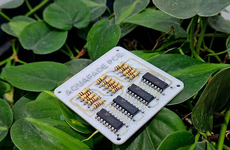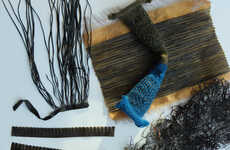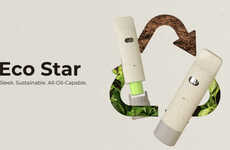
These Biodegradable Batteries Could Cut Down on E-Waste
Katherinev123 — November 26, 2009 — Eco
References: livescience
Paper-thin, biodegradable batteries may be coming to an electronics store near you. The biodegradable batteries, which would compete with commercial lithium-ion batteries, are made of algae.
Researchers at Uppsala University in Sweden have found that the algae species that clump together on beaches (called Cladaphora) can be used to make cellulose that is strong enough to hold conducting polymers that can recharge and hold electricity. In addition to being eco-friendly, researchers believe that the biodegradable batteries can be used for flexible electronics in the future, such as clothing that lights up.
Researchers at Uppsala University in Sweden have found that the algae species that clump together on beaches (called Cladaphora) can be used to make cellulose that is strong enough to hold conducting polymers that can recharge and hold electricity. In addition to being eco-friendly, researchers believe that the biodegradable batteries can be used for flexible electronics in the future, such as clothing that lights up.
Trend Themes
1. Biodegradable Batteries - The development of biodegradable batteries made from algae presents an opportunity for sustainable energy storage and reduced e-waste.
2. Cellulose-based Conducting Polymers - The use of cellulose-based conducting polymers opens up possibilities for flexible electronics and wearable technology.
3. Algae as a Sustainable Material - Exploring algae as a material for battery production showcases the potential of utilizing renewable resources in various industries.
Industry Implications
1. Renewable Energy - The biodegradable batteries made from algae have the potential to disrupt the renewable energy industry by providing an eco-friendly and sustainable energy storage solution.
2. Consumer Electronics - The development of biodegradable batteries opens up opportunities for the consumer electronics industry to offer more sustainable and environmentally-friendly products.
3. Fashion and Textile - The integration of cellulose-based conducting polymers in clothing creates opportunities for the fashion and textile industry to innovate with wearable technology and illuminated apparel.
3
Score
Popularity
Activity
Freshness























